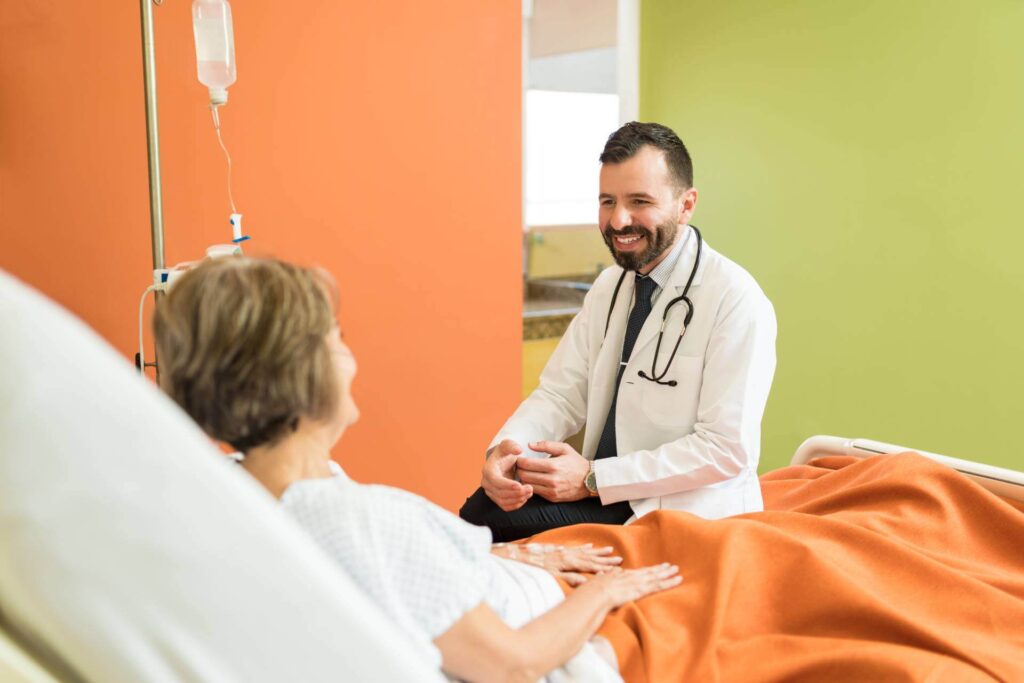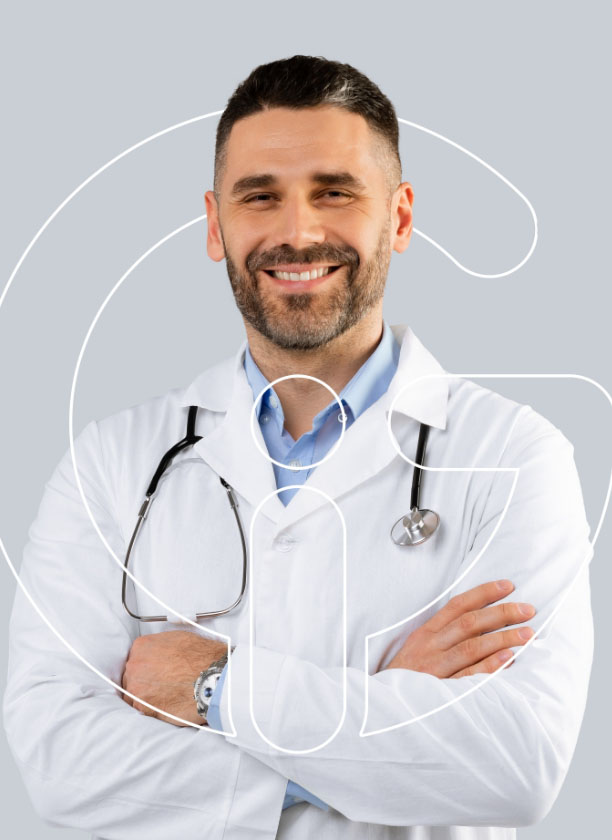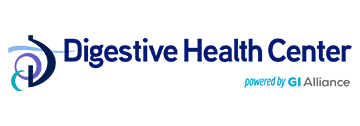Upper Endoscopy (EGD) in Thibodaux, LA
What is esophagogastroduodenoscopy?
An EGD (esophagogastroduodenoscopy) is an endoscopic procedure where a long, thin, adjustable tube, or “scope,” is placed into the mouth and guided through the digestive tract to the beginning of the small intestine. The scope is fitted with a light and camera at the end, which allows our GI specialists to easily review the lining of the esophagus, stomach, and the beginning of the small intestine.
An EGD may be recommended to help diagnose GI symptoms, such as pain in the abdomen, heartburn/reflux, complications with swallowing, bleeding, or abnormal findings from an X-ray. An EGD may also be performed for Thibodaux, LA patients who have chronic heartburn symptoms to screen for signs of esophageal cancer. If you need an EGD, request a consultation with a GI provider at a Digestive Health Center location in your community.

What are the benefits of an EGD?
Undergoing an esophagogastroduodenoscopy procedure can be advantageous for multiple reasons. The test can permit your GI doctor to directly examine the esophagus, stomach, and duodenum (the first portion of the small intestine). Further benefits of an EGD are:
- Assists in diagnosing multiple GI concerns (including gastrointestinal infections, Crohn’s disease, GERD, celiac disease, and others)
- Allows for polyp removal, tissue biopsies, and additional small procedures
- May help determine the causes of certain symptoms, such as pain or discomfort, heartburn, nausea, and vomiting
- Typically is an efficient, quick, and safe process
How should I prepare for my esophagogastroduodenoscopy?
Your Digestive Health Center GI provider will give you detailed instructions on how to prepare for your EGD. Most of our patients will be able to maintain their normal diet during the days leading up to their procedure. You may be asked not to eat or drink anything after midnight, except for any approved medications. Typically, you will not need to make any modifications to your medication regimen, but our team will review your medications especially if they include blood thinners (i.e., Coumadin®, Plavix®, warfarin, anti-inflammatories, aspirin). In these cases, our team will provide special instructions.
What should I expect on the day of my EGD?
Our team recommends arriving at the Thibodaux, LA endoscopy center at least an hour before your procedure. Once you have been called back, you will be asked to change into a procedure gown. An IV will be put in your arm or another area so we can begin the sedation process. You will be connected to special equipment that allows your GI specialist to track your heart rate, blood pressure, pulse, electrocardiogram, breathing, and oxygen level throughout your procedure.
Once in the exam room, you will be asked to lie on your left side on the exam table to begin the sedation process. After you are sedated, the endoscope will be inserted into your mouth. The scope will be gently advanced through your esophagus, stomach, and the first portion of the small intestine (duodenum). We will inject a small amount of air through the scope into the gastrointestinal tract will give our team better visibility. Any fluid remaining in the upper gastrointestinal tract will be suctioned out through the endoscope. Based on the findings of the procedure, several things could be done, like control of bleeding, the removal of polyps, and biopsies. You can expect this procedure to take between 10 – 20 minutes. After the exam is complete, you will be taken to the recovery room, where you will be monitored while the sedation wears off.
When will I get my EGD results?
After the exam, our team will review the results with you. Because of the sedation, many of our patients will not recall what is discussed following their procedure. We highly recommend bringing a family member with you so that the results may be discussed with them as well. Our team will also provide you with a typed review of what was discussed. If a biopsy is done during the EGD, our team will usually receive the results in a week.
What are the risks of an EGD?
In most cases, an EGD is a safe and reliable procedure. Overall, complications arise in less than 1% of procedures. Most problems are not life-threatening; although if an issue arises, it might require hospitalization and surgery. Before the exam, a consent form will be reviewed with you by our team. Should you have any questions or concerns, you can discuss these with your GI specialist before your treatment.
Like other tests, an EGD is not foolproof. There is always a slight possibility that abnormalities, such as cancers, can be overlooked at the time of the exam. It is important to maintain visits with your GI provider and let them know about any new or constant symptoms.
Are there alternative treatments to an esophagogastroduodenoscopy?
To a certain extent, the alternatives to an EGD will depend on the reason you need an esophagogastroduodenoscopy in the first place. Generally, an EGD is the standard procedure used to evaluate and address abnormal results in your upper GI tract. A barium X-ray can check your upper GI tract as well. However, this is only a diagnostic X-ray. Treating the findings of the X-ray may still require an EGD or another procedure.
EGD FAQs
Is an EGD the same as an upper endoscopy?
It is common to hear an EGD referred to by a variety of names. In some cases, it may be termed an “upper endoscopy” or a “gastroscopy.” Even though these names may be different, they are generally the same procedure as an esophagogastroduodenoscopy.
What are considered "normal" results for an EGD procedure?
“Normal” EGD results typically indicate that the gastrointestinal physician did not detect areas of concern in the upper gastrointestinal tract. However, normal results may be represented by a normal color and smooth texture in the esophageal, stomach, and duodenal areas. In addition, there should be no signs of inflammation, bleeding, or growths in these tissues. It is important to remember that a “normal” result does not always mean that no medical conditions are present. Some health issues might not be apparent with this type of exam or could be located in another area of the digestive tract, beyond the reach of the endoscope utilized throughout the procedure.
When would an EGD be recommended?
Your Digestive Health Center physician may prescribe an EGD exam if you have liver cirrhosis or Crohn’s disease to help keep track of such health conditions. In addition, an EGD may be recommended if you experience:
- Black or tarry stool
- Vomiting of blood
- Heartburn
- Upper abdominal pain or discomfort
- Issues with swallowing
- Unintentional weight loss
- Persistent nausea
What do I need to bring to my EGD visit?
When you come in for your esophagogastroduodenoscopy exam, you might be required to complete some paperwork. Therefore, you should bring your identification and insurance card with you to your appointment. It also can be beneficial to bring a written list of all prescription and nonprescription medications you take, the dosages, and the reason for taking them. We recommend that you leave valuables, such as jewelry, at home.

